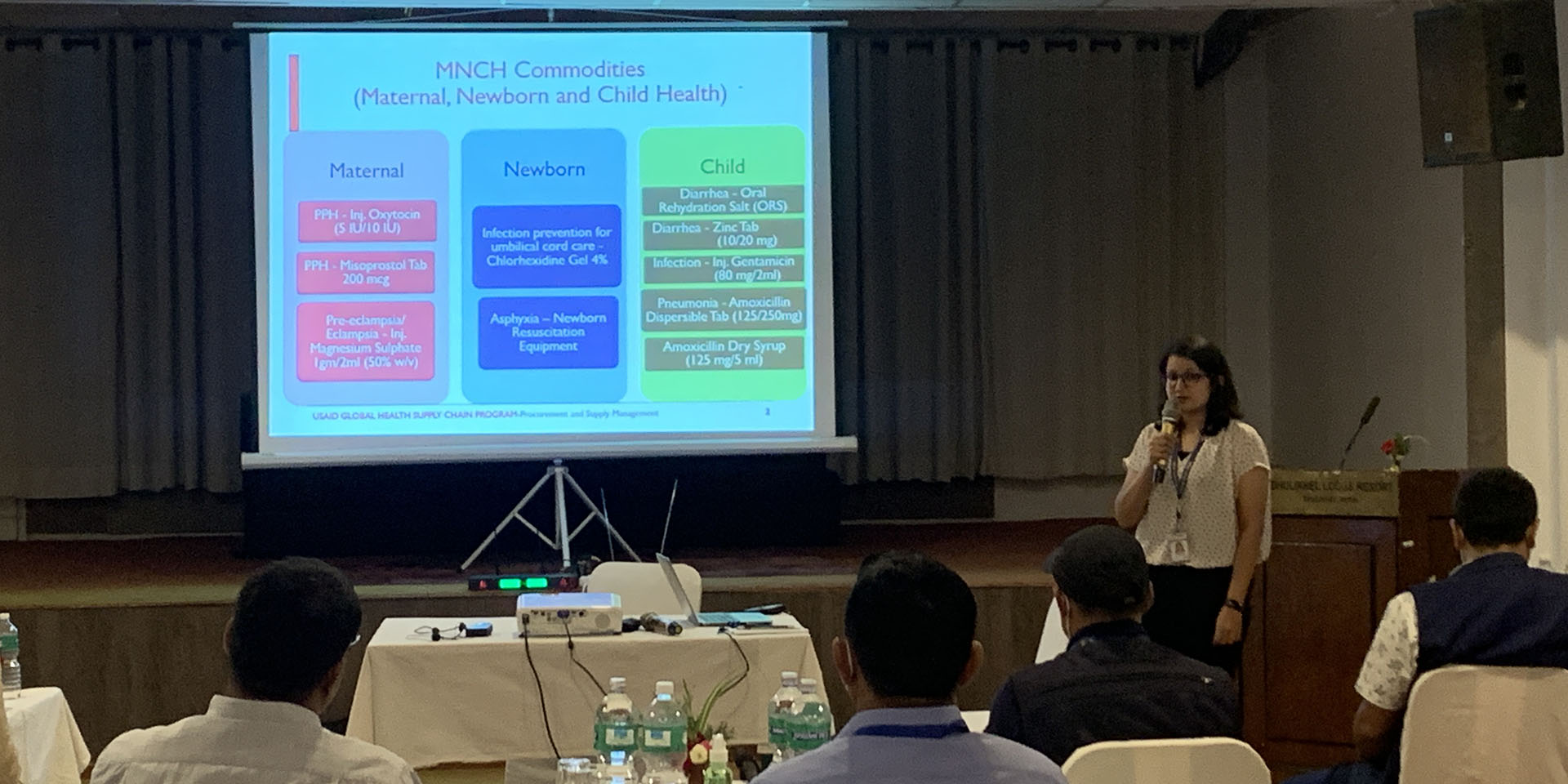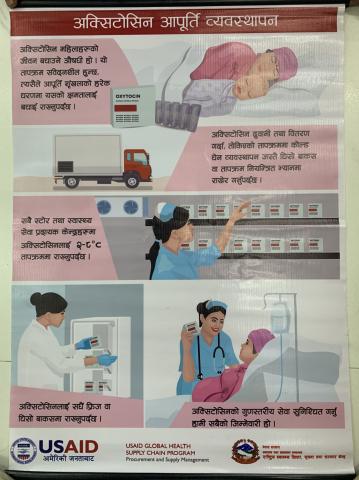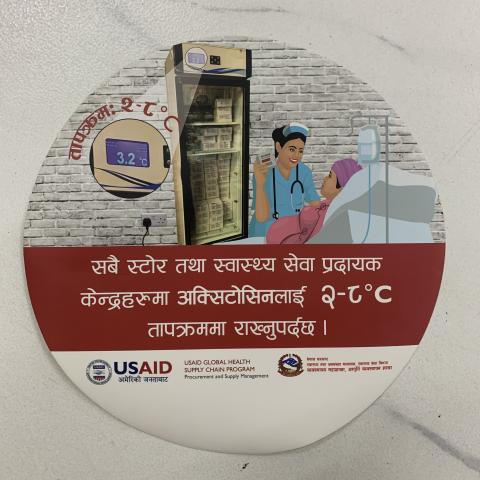In order to ascertain the current storage and distribution practices for oxytocin, GHSC-PSM conducted a cross-sectional study at 70 birthing centers (53 health posts, five primary healthcare centers, one primary hospital, and 11 district hospitals) during August and September 2021. The study showed that only 21 percent of the birthing centers received oxytocin maintaining cold chain procedures, and about 40 percent stored oxytocin in the refrigerator/freezer. GHSC-PSM observed a substantial lack of resources for maintaining oxytocin in cold chain during storage and distribution; a lack of awareness regarding oxytocin sensitivity in storage; and improper labelling in packages of oxytocin brands available on the market.
The findings of the oxytocin assessment, along with other maternal, newborn and child health (MNCH) commodity issues, were shared with the GoN and supply chain stakeholders during a workshop held on April 29 and 30, 2022. GHSC-PSM presented finalized recommendations at the workshop, and with the GoN, committed to the improvement of supply chain management of oxytocin. GHSC-PSM continues to support in the following ways.


